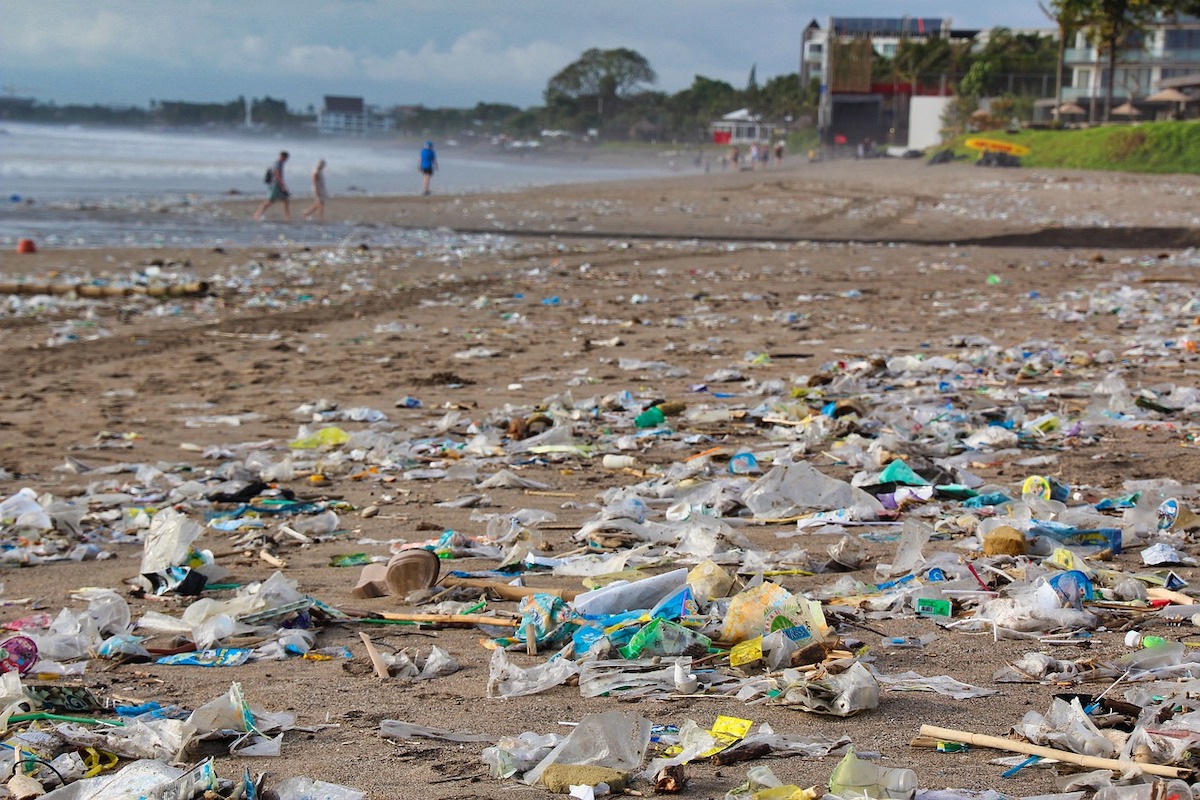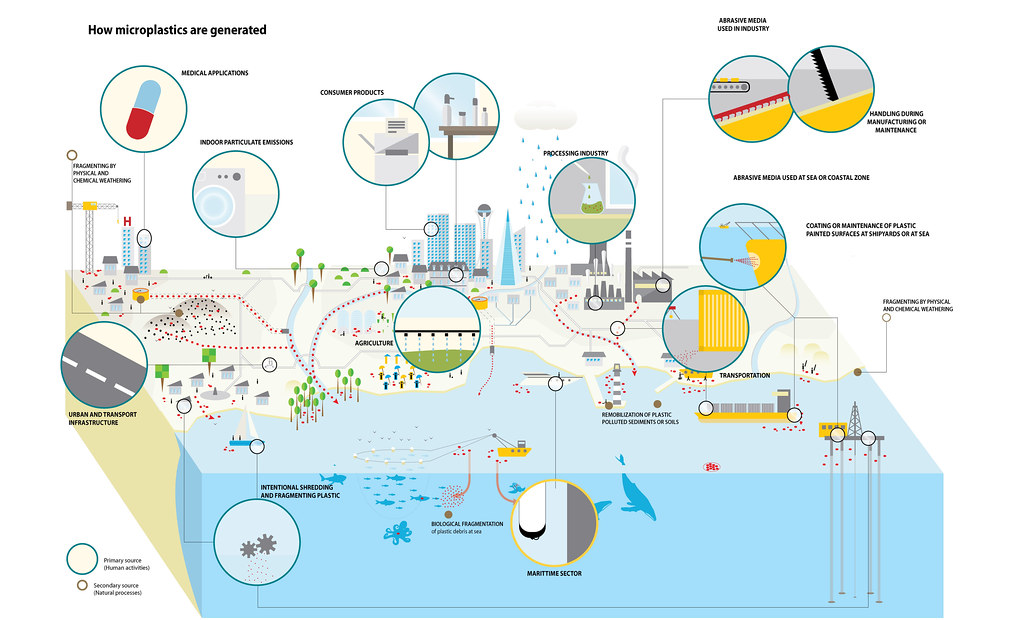Plastics are in the news a lot lately. From the elimination of single use plastics to curtailing plastics pollution society seems to be taking plastics management seriously. But what about microplastics?
Taking care of the larger plastics issue is truly important. But if we don’t also manage the creation and disposal of microplastics we are only solving a part of the problem.
What exactly are microplastics and why should we care?
What are Microplastics?
According to Wikipedia, Microplastics are “fragments of any type of plastic less than 5 mm (0.20 in) in length.”
A distinction is made between primary microplastics which are already in small fragments before they enter our ecosystem, as compare to secondary microplastics which are created through the degradation and breakdown of large plastics.
The degradation and breakdown of these plastics however can literally take hundreds of thousands of years if left to run their course.
Why is this a problem?
A significant problem caused by the presence of these small fragments is not only the contamination introduced into our natural environment, but the potential for human ingestion of these materials as they enter some stage of the Food Supply Chain.
Microplastics can be airborne, they can be found in our oceans and water supply, they can be found in our terrain, and they can be found in the varying organic and animal species that populate our planet. There are an estimated 24 trillion pieces of microplastics in our oceans alone.
And they are not biodegradable.
Birds, fish and other animals, much of which is a part of our food source, have been found to have ingested these by-products. Our drinking water sources have been found to contain microplastics.
The Smithsonian has reported that these materials have been found in fresh Antarctic snow. The Maldives have some of the highest microplastic levels on earth. These materials have permeated every aspect of our environment and ecosystem.
Albert Koelmans, as reported in nature.com, thinks that “people might be ingesting around the mass of a credit card’s worth of microplastic a year.” And the Guardian reports that microplastics have been found in human blood along with presence in human tissue and organs.
That’s scary stuff! And that’s why you should care!
Problems and Solutions
As difficult as it is to clean up the bigger plastics floating in our oceans, given the tiny size of these microplastics it is infinitely more difficult to remove them from our environment.
Certainly removing the bigger items is critically important because it does reduce the infeed of goods that will eventually degrade to become secondary source microplastics.
But there is still the problem of dealing with those primary source materials as well as those already in the process of degradation. This is why efforts to reduce the initial production and use of plastics, such as the efforts to eliminate single use plastics, are important.
Overall, these are the solutions that seem to be currently considered among the scientific, academic and environmental communities:
- Reduce consumption and usage, which in turn will reduce the need for initial production
- Find alternatives to plastics (eg. paper straws instead of plastic straws)
- Recycle properly and eliminate the disposal of plastics that does not lead to direct recycling capability
- Collection and cleanup of plastics from our oceans, waterways, and land
- Creation of filtration systems to contain and collect plastic waste before it progresses further into our water ways
- Scientific research into biological and environmentally friendly chemical treatments to eradicate microplastics and accelerate their degradation/elimination
Conclusion
Microplastics are real and by virtue of their size they create a hazard that is not visible to the naked eye, but dangerous just the same.
Our efforts for resolving this problem must focus on both preventive and corrective measures.
Preventive measures are centred on the reduction of plastics generated in the first place. Further, for any plastics that are generated we must ensure that they are properly recycled for reuse and/or disposal. Despite these initiatives our preventive measures must also allow for the rapid degradation/elimination of the microplastics that are still created.
Corrective and containment measures are necessary to deal with the problem that already exists. Cleaning up our oceans, waterways, and land of all plastics is essential. All containment efforts must stop the literal, continuous flow of plastics downstream. Only then can we hope to stop the cycle of new microplastics creation from existing products.
Plastics are not a naturally occurring substance. Their presence in our environment, in our animal species, in our natural resources, and in our bodies is not natural. No good can come from perpetuating this problem.
The time to act is now! With the conviction of governments, institutions, industries, and the general public we have an opportunity to solve at least this problem, amongst the many other problems that plague our environment.


